A pdf version is also available to download.
CHAIRMAN’S FOREWORD
Dr Don Grant
((PICTURE OF DON HERE))
The Intergovernmental Committee on Surveying & Mapping (ICSM) is a standing committee of ANZLIC, the Australia New Zealand Spatial Information Council. As such, it is important that ICSM's activities are aligned with and contribute to the high level policy direction determined by ANZLIC.
At the start of my tenure as Chair, it appeared to me that the communications between ANZLIC and ICSM were somewhat ad hoc. The ICSM Strategic Plans were developed independently by ICSM members based on their interpretation of the direction set by ANZLIC. There was some reporting of ICSM achievements at ANZLIC meetings but not a formal report against agreed milestones.
In November 2010 I attended an ANZLIC meeting in Hobart at which it was agreed that the ICSM Chair would attend the March ANZLIC meeting each year to:
- present the ICSM Strategic Plan
- seek ANZLIC endorsement of the plan or any changes
- report on progress against the previously endorsed plan.
The first ICSM Strategic Plan to be formally considered by ANZLIC was endorsed (with some changes) at the meeting in March 2011 in Perth. In March 2012, I provided the first formal ICSM report to the ANZLIC meeting in Melbourne on the achievements made in terms of this agreed plan.
Much of ICSM’s work is done by its committees and working groups. Over time, a set of permanent committees, technical subcommittees, working groups, special interest groups and project committees had built up. Most of these reported directly to ICSM itself and this added to the complexity of the ICSM meetings. Therefore I initiated a review of the structure which reduced the number of committees reporting directly to ICSM from 14 committees to 6 Permanent Committees. Most of the remaining committees are retained as sub-committees of these six. This structure has also helped us to align our Permanent Committees with the Foundation Spatial Data Themes which are an ANZLIC focus.
The new structure does not in any way reduce the significance of the subcommittees. They continue to deliver the important high quality outcomes and networks which identified with ICSM. In fact one of the strengths of ICSM is its ability to call upon technical experts across all jurisdictions. It is my firm belief that the chairs of the ICSM committees are better placed than anyone in Australia or New Zealand to know who across the jurisdictions is best able to contribute to an ICSM or ANZLIC project, based on their specific technical expertise and availability (recognising that these experts each have their own work responsibilities in the jurisdictions). This knowledge of the ICSM committee chairs becomes particularly valuable as ANZLIC looks to develop the Foundation Spatial Data Themes Framework.
I want to acknowledge the assistance of the previous ICSM Chair, Russell Priebbenow, who supported me in the transition to Chair and who also made my job easier by continuing to represent ICSM on some Australian based committees. Of course, all ICSM members have also provided me with sound advice, governance of various committees as chairs and sponsors, not to mention good company at the ICSM meetings.
The only change in membership occurred when Greg Scott of Geoscience Australia took up a new role in the United Nations and was replaced on ICSM first by Gail Hill and then Simon Costello. Following the end of my term, Peter Kentish was looking forward to a well-deserved retirement — after an amazing 21 years serving ICSM.
I want to thank the incoming Chair, Paul Harcombe, for agreeing to accept the role of chair for a second time. I know that the relationship with ANZLIC will be enhanced during his tenure and that ICSM will continue to add considerable value to surveying, mapping and spatial information across Australia and New Zealand.
During my term as Chair, our executive officer, Susie Salisbury, retired. Susie was the longest serving ICSM executive officer, and arranged a smooth transition to the new executive officer, Lesley Waterhouse. As the first ICSM Chair from New Zealand, I needed plenty of advice on the connections between the various surveying, mapping and spatial committees, and the forest of acronyms that surround them. Susie and Lesley helped me to find a way through these structures, and were also adept at turning my vague suggestions into results. Thank you both for your considerable support during my term.

Dr Don Grant, Chair
1 July 2010–30 June 2012
Dr Don Grant
Surveyor General
Don Grant holds a BSc Honours in Physics from Canterbury University, a Diploma in Surveying from Otago University and a PhD in Surveying from the University of New South Wales. He registered as a surveyor in 1979 and is a licensed cadastral surveyor. In 2007 he became a Fellow of the New Zealand Institute of Surveyors.
Don was appointed Deputy Surveyor General of New Zealand in 1996 and worked on the Landonline programme for automation of the survey and title systems.
Since 2004, Don has been Surveyor General. As such, he is responsible for the geodetic and cadastral survey systems, and has responsibilities for electoral boundaries and geographic names. In 2010 Don completed a zero-based review of all cadastral and geodetic standards to ensure that survey regulation was at the optimal level of being as little as possible—but as much as necessary.
Following the disastrous earthquakes in Canterbury in 2010 and 2011, Don initiated a review of the Rules for Cadastral Survey to accommodate the impact of fault rupture and earth deformation on cadastral boundaries.
Achievements During 2010–2012
- A five year Geodetic Strategic Plan to move Australia to a fully dynamic datum by 2020 was adopted.
- Completion of the AuScope project providing a national network of Continuously Operating Reference Stations (CORS).
- The revision of the Standards and Practices for Control Surveys (SP1) was ready to go out for industry feedback.
- Fundamentals of Land Boundaries, a document clarifying the cadastre for the public and school students was completed.
- ICSM engaged with NBN Co to ensure that they understand the importance of the survey system and will ensure that construction work for the broadband network will not imperil geodetic and cadastral control marks.
- ICSM signed up as a supporting participant for a research project at Melbourne University on 3D cadastres.
- The ePlan protocol for the electronic transfer of survey plan information was implemented in three jurisdictions.
- The National Elevation Data Framework was supported with imagery acquisition standards. This will aid the development of national strategies to address climate change and water security.
- Work to establish the relationship between tidal levels and the ellipsoid at 128 major ports was close to completion.
- The revision of the Australian Tides Manual (SP9) was completed.
- Released the national gazetteer of place names (and other ICSM documents) under a Creative Commons License—CC BY.
- ICSM provided the lead for a Standards Australia review of the Australian and New Zealand street addressing standard. This was completed and copies were purchased and distributed to local councils. This standard also facilitates National Address Management Framework (NAMF) compliance.
- Established standards for a nationally consistent roads data set, to support national modelling and analysis of road networks.
- National Topographic Information Coordination Initiative (NTICI) reviewed and enhanced to enable agencies to collaborate to capture information once for multiple uses.
- The alignment between ICSM Permanent Committees and ANZLIC's Foundation Spatial Data Themes was clarified and reported to ANZLIC.
COLLABORATIVE INITIATIVES
ICSM Contribution to building Skills
- Recent studies have again highlighted the potential for significant future skill shortages in the surveying and spatial professions. ICSM continues to assist with national initiatives designed to address this problem. Several recent contributions include:
E-Learning:
- In January 2010 ICSM contributed funding for the development of the material as part of a Vocation Education and Training (VET) E-Learning initiative. Initial material was created in the form of lesson plans for the introduction to GIS and GNSS. The intention is to facilitate distance learning by providing lessons on-line.
- The concept would allow anyone to gain new knowledge which may be acceptable as prior learning towards TAFE qualifications. It is hoped that the material would also be suitable for school students, particularly those studying geography.
- This project is currently on hold pending further funding.
Other Initiatives:
- ICSM have developed a very popular ‘Fundamentals of Mapping’ web site which explains mapping basics for students and the general public. Based on the success of this project ICSM have now produced a ‘Fundamentals of Land Boundaries’ document. This is currently available on line as a pdf however it will soon be modified to make it more accessible.
3D Cadastre with Melbourne Uni:
- Working with the University of Melbourne on the concept of a 3D cadastre. ICSM is a contributor to an Australian Research Council grant providing funding and in-kind support to the University for this work. Progress to date is very encouraging.
About ICSM
Our vision
National land and marine spatial infrastructure providing sustainable benefits for Australians and New Zealanders
Our role
To provide leadership, coordination and standards for surveying, mapping/charting and foundational spatial data.
Who are we:
The Intergovernmental Committee on Surveying and Mapping (ICSM) is a standing committee of ANZLIC, the Spatial Information Council.
ICSM members represent 11 jurisdictions and are senior representatives of Australian and New Zealand commonwealth, state and territory surveying, mapping and hydrographic charting agencies.
ICSM is supported by a network of permanent committees and working groups. Working group members come from key government, academic, and private organisations from within Australia and New Zealand.
National
- Australia–civilian
- Australia–military (terrestrial and marine)
- New Zealand
Australian State/Territory
- Australian Capital Territory
- New South Wales
- Northern Territory
- Queensland
- South Australia
- Tasmania
- Victoria
- Western Australia
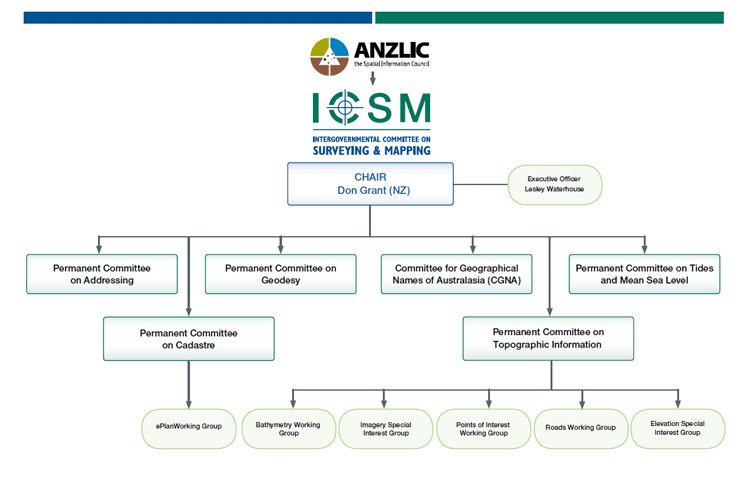
What we do:
As a key coordinating body in Australia and New Zealand for surveying and mapping issues, ICSM provides a forum that enables the exchange of information and ideas.
Our function is to:
- provide national coordination of surveying and mapping activities and research
- establish protocols and technical standards for spatial data and related infrastructure
- support the acquisition and maintenance of datasets forming the foundation data framework
- develop and publish best practice guidelines, national technical policies, standards, specifications and data models for foundation spatial data
- encourage a consistent approach across jurisdictions to spatial data policies, standards, programs and priorities
- provide technical advice and support to other coordinating bodies
- promote data integration
- provide a forum to share knowledge, experiences and expertise for foundation spatial data
- communicate and develop relationships with key stakeholders in government, industry and the user community.
How we add value:
ICSM's activities support government and industry, and:
- provide national coordination, encouraging efficiency through consistency and cooperation, sharing best practice, and reducing duplication
- create enabling infrastructure (including products)
- support networking, learning and innovation across the surveying and spatial information sector
- increase advocacy for spatial information and surveying to improve efficiency and decision making.
How we work:
The ICSM Terms of Reference and Governance Charter is a set of rules that govern the conduct of our activities.
ICSM meets every six months and informs stakeholders of progress and activities through publications on our website and through email.
A Chair is appointed from the Committee every two years and an ICSM Executive Officer delivers secretariat and project support to members, Permanent Committees and working groups.
ICSM invites subject matter experts and key stakeholders to attend meetings to discuss items of mutual interest.
History
Prior to 1988, the National Mapping Council (NMC) coordinated Australian mapping programs. Although the NMC had been an effective forum, the changing operational environment required the formation of a national organisation to cover both surveying and mapping issues.
ICSM was established by the Prime Minister, State Premiers, and the Chief Minister of the Northern Territory in 1988. The Australian Capital Territory and New Zealand also joined ICSM.
In 2002 ICSM became a standing committee of ANZLIC—the Australian and New Zealand Spatial Information Council.


Top to bottom, left to right:
- Bill Hirst (ACT)
- Gordon Homes (Aust)
- Gary Johnston (Aust)
- Russell Priebbenow (Qld)
- Simon Costello (Aust)
- Peter Kentish (SA)
- Peter Murphy (Tas)
- Graham Johnston (Aust)
- Rod Nairn (Aust)
- John Tulloch (Vic)
- John Gallagher (Vic)
- Don Grant (NZ and ICSM Chair)
- Lesley Waterhouse (ICSM EO)
- Paul Harcombe (NSW)
- Lesley Arnold (WA)
(Absent–Garry West, NT)
See the ICSM Membership section for information about individual ICSM agencies.
Permanent Committee on Addressing (PCA)

Chair, Anselm Haanen
Deputy Surveyor–General,
Land Information New Zealand
Sponsor, John Tulloch
Surveyor–General, Department of Sustainability & Environment
Victoria
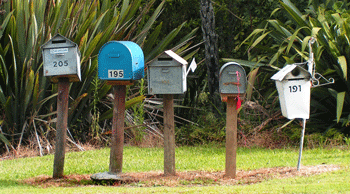
About PCA
The Permanent Committee on Addressing (PCA) provides leadership in addressing, road naming, and locality definition. This includes setting standards, developing guidelines, and promoting systems for the efficient interchange and sharing of address data.
The PCA was created in 2012 with a wider remit than its predecessor, the ICSM Street Addressing Special Interest Group (SASIG) which was particularly tasked with reviewing and promoting the Standard for Street Addressing.
Terms of Reference
Addresses provide one of the key infrastructural datasets that underpin the economy. However this foundation dataset and its maintenance processes have a number of shortcomings that are not serving our people, businesses, and government agencies well.
The PCA aims to improve the quality of addressing and address information. This will be achieved through working with state and territory jurisdictions, who in turn work with local governments. It is local councils who usually have the responsibility for assigning addresses, naming roads, and defining localities. The PCA includes representatives from Australia Post, NZ Post, and PSMA.
Activities During 2010–2012
A major milestone for ICSM was the completion of the review of the 2003 Standard for Street Addressing. AS/NZS 4819:2011 Rural and Urban Addressing was published by Standards Australia In November 2011. The technical review of this Standard was undertaken by SASIG using the framework, support, and consultation processes provided by Standards Australia.
ICSM also purchased a bulk supply of the Standard and provided a free copy to 547 councils throughout Australia.
Benefits Through Collaboration
People expect to be able to easily interpret and use addresses and road names no matter where they are in Australia and New Zealand. An important role of PCA is to help ensure that addressing is undertaken in a consistent manner throughout the Australia and New Zealand, and that address data from each state and territory can be merged into a coherent national dataset.
PCA helps achieve these goals through bringing together key representatives from the state, territory, and national agencies. The standards and guidelines that it develops are then used by those agencies when working with councils and other agencies who actually assign addresses and name roads.
Future Activities and Challenges
PCA next major project is the development of a set of guidelines to accompany the Addressing Standard. These guidelines will help councils in their roles of assigning addressing, naming roads, and defining localities and suburbs.
ANZLIC’s Foundation Spatial Data Framework identifies ‘Geocoded Addressing’ as one of its ten spatial data themes. PCA is providing the technical leadership to specify the foundation dataset/s, identify the gaps between what currently exists and what is required, and then develop some plans for closing those gaps.
Permanent Committee on the Cadastre (PCC)

Chair, Bill Hirst
Surveyor–General
Planning and Land Authority, Australian Capital Territory
Sponsor, Peter Murphy
Surveyor–General
Department of Primary Industries, Parks, Water and Environment,Tasmania
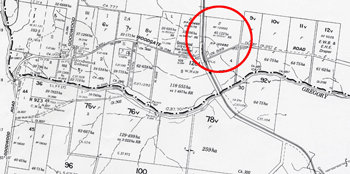
About PCC
The Permanent Committee on the Cadastre (PCC) was established in 1999 to provide a leadership role in:
- advising ICSM on cadastral matters
- raising awareness of the cadastre and the benefits of the digital cadastral system to the spatial industry and the community.
Its role is to develop a coordinated approach to cadastral maintenance and improvement of digital cadastral data. This incorporates involvement with all stakeholders, including other peak government and industry groups.
Activities During 2010–2012
PCC has two face–to–face meetings per annum, in association with the biannual ICSM meetings, and teleconferences when needed.
ICSM have funded a consultancy to develop a ‘Fundamentals of Land Boundaries’ publication. This document explains ownership of land, and the boundaries which define the limits of that ownership. The role of surveyors in the determination of land boundaries is also explained.
Another important initiative for PCC has been working with the University of Melbourne on the concept of a 3D cadastre. ICSM is a contributor to an Australian Research Council grant providing funding and in–kind support to the University for this work. Progress to date is very encouraging.
PCC have also been working with NBN Co. to reduce the potential loss of survey marks during the cable roll out. This also provided an opportunity to promote the use of the new ICSM supported Australian Standard on Underground Utilities.
Benefits Through Collaboration
ICSM has developed a new ‘Fundamentals of Land Boundaries» to aid students and the general public understanding of important role of the Registered Surveyor in land administration.
In the next reporting period (2012–2014) ICSM will continue to be engaged with spatial industry education initiatives, including improving access to Foundations of Land Boundaries web site making it more relevant for students and teachers.
Future Activities and Challenges
- Improving Fundamentals of Land Boundaries to add graphics and make it more accessible
- Assisting University of Melbourne with research into 3D cadastre
- Support ANZLIC and the Commonwealth Office of Spatial Policy on the Land Parcel and Property Theme of the Foundation Spatial Data Framework.
ePlan Working Group (ePlan)

Chair, Nevil Cumerford
Project Leader EARL,
Cadastral and Geodetic Services, Land and Spatial Information Group
Land and Indigenous Services, Queensland
Sponsor, Garry West
Surveyor–General
Department of Lands and Planning, Northern Territory

About e–Plan
This committee was established in November 2003 when it was recognised that a national cadastral data transfer standard was needed to capitalise on the inherent efficiencies that electronic lodgement and processing of digital cadastral data can bring.
The ePlan Working Group is composed of representatives from industry and government to review and progress this change. In late 2010 the ePlan group published the Australian ePlan Protocol and moved its focus from the Development of the Protocol to implementation within the Jurisdictions.
Terms of Reference
- Implement communication strategy involving industry stakeholders.
- Establish a web site for ePlan Reference Implementation media.
- Legally operational implementation in at least two jurisdictions.
- Develop 3D capabilities of the ePlan Model.
- Align ePlan Model with ICSM Harmonised Data Model.
- Make recommendations for implementation, review and management of ePlan standards.
- Provide advice to ICSM on other areas of electronic survey data transfer.
- Make regular reports to ICSM on progress.
Activities during 2010–2012
Over the two year period significant progress has been made in making the electronic capture and lodgement of survey plans a reality.
In October 2010 the ICSM ratified the ePlan Protocol and published this to industry and software vendors. Work was started by several vendors to develop software solutions for their clients.
In 2012 three Jurisdictions had advanced developments to the stage of the planned production releases.
- Victoria had built in support for uploading ePlan files as a supporting document as a PDF in November 2011 and received 10 ePlan files submitted by pilot surveyors. A subsequent release was planned for production acceptance of ePlan files as the formal Plan of Subdivision/Consolidation in mid May 2013.
- New South Wales to receive its first ePlan Submission in late November 2012.
- Queensland had developed the internal and external infrastructure in place to consume ePlan files and was working with software vendors to provide consistent data.
During 2012 a number of software vendors developed and released versions of software to create ePlan files, some implementations were jurisdictionally specific and others were more generic.
- Four companies had released software for general use.
- Four companies were in development of product.
- Several vendors had products at the end of their life cycle and were in the process of implementing new software solutions.
The jurisdictions of Queensland, New South Wales and Victoria were working on a cooperative solution for the visualisation of ePlan files with the expectation that by the end of 2012 a fundamental visualisation could be produced for files in all three states. Further development of this product is required as more complex surveys are visualised.
The three jurisdictions have also cooperated on the development of functionality for processing of ePlans within the jurisdictional business areas.
The ePlan Protocol documents have been very stable since they were first published with only four Statement of Proposal (SOP’s) being raised to change the original protocol. All were accepted resulting in minor adjustment to the protocol schemas. These changes mostly arose during the process of exercising the model for more complex scenarios within the Cadastral Survey Domain.
The International Standards Organisation was finalising the ISO/FDIS Standard 19152 Geographic Information—Land Administration Domain Model (LADM). The ePlan Protocol needs to be consistent with this standard into the future. Preliminary work suggests that the ePlan Protocol supports this standard but further work is required.
The ePlan Protocol is based on the LandXML1.2 Schema and during 2012 work commenced to bring the LandXML Schemas under the OGC Umbrella. This work is still progressing and the ePlan group is playing a significant role in this review.
Future Activities and Challenges
2013 is expected to be a busy year for the working group with legal submission of ePlans in at least three Australian Jurisdictions, the release of improved visualisation tools and more jurisdictions supplying digital data to industry. It is also expected that more surveyors will take up the option to submit digital surveys as training by vendors and jurisdictions is offered.
Permanent Committee on Geodesy (PCG)

Chair, John Dawson
Section Leader, National Geospatial Reference Systems Section
Geoscience Australia, Australian Capital Territory
Sponsor, Gary Johnston
Group Leader, Earth Monitoring and Hazards Group
Geoscience Australia, Australian Capital Territory
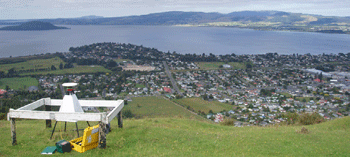
About PCG
Geodesy provides the positional framework for all surveying, mapping and geographic information applications in Australia. In 2012, the Permanent Committee on Geodesy (PCG) was renamed from the Geodesy Technical Sub–Committee (GTSC). The PCG is responsible for providing advice on geodetic issues. It has existed as a series of working groups since the inception of ICSM in 1988. The PCG’s primary role is to maintain a compatible geodetic infrastructure across Australia and New Zealand.
Role
The role of the ICSM Permanent Committee on Geodesy is to:
- address action issues referred to the Committee by ICSM
- identify issues and propose possible solutions for consideration by ICSM
- coordination, development and maintenance of geodetic infrastructures
- coordination, preparation and update of technical publications
- coordination of efficient dissemination of geodetic information.
Activities During 2010–2012
PCG held biannual face–to–face meetings as well as teleconferences when necessary.
Over the two year period PCG members have worked towards completing the National Collaborative Research Infrastructure Strategy (NCRIS) funded component of AuScope and specifically its geodetic infrastructure improvement program. AuScope is a Commonwealth, State and Territory initiative which has seen the construction of major new facilities and capabilities, including: three Very Long Baseline Interferometry (VLBI) observatories; upgrades to the Mt Stromlo Satellite Laser Ranging (SLR) system; absolute and earth tide gravimeters and observatories; and construction of a new national Global Navigation Satellite System (GNSS) network.
Work commenced on the AuScope Australian Geophysical Observing System (AGOS) project. AGOS is the geospatial component of the Australian Government's $42.8 million AuScope project which is being managed by Geoscience Australia in cooperation with Western Australia, New South Wales, Queensland and Tasmania and a number of universities. The AGOS geospatial program includes construction of a GNSS antenna calibration facility at Geoscience Australia, with two outdoor robotic calibration systems, as well as construction of survey networks in regions where deformation of the Earth’s crust is suspected.
The PCG has led the development of a standards based approach for the exchange of geodetic data and metadata within Australia and New Zealand. To date this work comprises the eGeodesy Logical Model that describes the core components within the geodetic domain and their relationships to each other, a series of UML Use–Case scenarios that describe the tasks required to support the upcoming national readjustment of the Australian Geodetic Datum, and the creation of a draft XML application schema (GeodesyML) for the transfer of geodetic and adjustment information.
A revised Australian Geoid model (AusGeoid09) was released. AusGeoid09 is a more direct and accurate method of deriving Australian Height Datum (AHD) heights from ellipsoidal heights. AusGeoid09 includes a geometric component to model the offset between the gravimetric geoid and AHD. This has allowed high precision GPS users to calculate AHD heights either in real time in the field, or via post processing back in the office to within ±3cm across most of Australia; this is an order of magnitude more accurate than AusGeoid98.
PCG has worked to revise its Standards and Practices for Control Surveys (SP1). The new Standard, entitled Standard for the Australian Survey Control Network—Special Publication 1—Version 2.0, has been adopted by the ICSM and the PCG is working to complete the associated Guidelines for public release in mid–2013.
Future Activities and Challenges
The future activities of the PCG will focus on national datum refinement and delivery.
This work recognises that present geodetic infrastructures are now unable to support positioning with an accuracy that meets user expectations. The PCG work program will systematically examine 4–D coordinate estimation and modelling strategies and the regulatory and administrative impediments to a smooth and robust transition to a future datum. A Roadmap has been developed for the development of a new 3 dimensional datum for Australia over the coming five years. PCG is also examining options for a transition to a time variant 4 dimensional datum towards the end of this decade.
The PCG will provide technical input into the development of the National Positioning Infrastructure (NPI) which has the objective of providing instantaneous, reliable and fit–for–purpose positioning and time services anywhere and anytime across the Australian landscape and its maritime jurisdictions.
Permanent Committee on Topographic Information (PCTI)

Chair, Lesley Arnold
Manager, Location Knowledge Services
Landgate, Western Australia
Sponsor, Simon Costello
Group Leader, National Geographic Information Group
Geoscience Australia, Australian Capital Territory
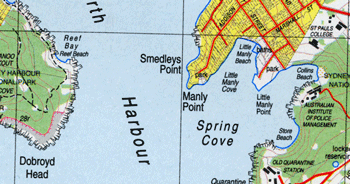
About PCTI
The aim of the Permanent Committee for Topographic Information is to enhance the coordination of Geographic Information Management and associated activities undertaken by the jurisdictional mapping agencies and the private sector.
Terms of Reference
- Recommend initiatives to ICSM that are relevant to the future of topographic mapping carried out in Australia, Australian Territories, and New Zealand
- Provide a framework for enhanced cooperation
- Liaise with key government bodies and industry stakeholder groups on matters of prioritisation and national coordination of topographic mapping and data projects
- Advise on initiatives that aim to raise the awareness of industry and the community to the benefits of topographic mapping
- Identify and develop, and promote ‘best practice’ standards and guidelines for topographic mapping and data generation, maintenance, and dissemination that are within the ambit of ICSM.
Activities During 2010–2012
PCTI met four times during 2010–2012 and held teleconferences when needed. The first of these meetings each year is conducted in Canberra at Geoscience Australia while the second is normally hosted on rotation by a nominated jurisdiction and combined with a technical workshop on topographic mapping.
The major activities in 2010–2012 included:
- Development of a strategic plan for the Committee which describes the context, issues, opportunities and challenges of a rapidly changing and evolving geographic information environment. The plan outlines a strategic framework and guiding principles to develop key activities to meet these challenges.
- Continuing management of the collaborative collection and maintenance of topographic information between the Commonwealth, States and Territories. In 2010–2012 these projects included the update of:
- buildings and water features in coastal New South Wales
- roads in remote western Queensland
- buildings in south–west Western Australia and the Ord River basin
- water features in south–west Western Australia
- buildings in northern South Australia
- infrastructure in Tasmania
- national revision of airfields, rail and waste management sites.
- Review of the issues around collaborative projects, in particular identifying supply chains for topographic information and integration of the outputs of collaborative projects into stakeholder data stores.
- Commenced the provision of domain knowledge and advice on geographic information content to the ANZ Foundation Spatial Data Framework.
Benefits Through Collaboration
PCTI’s mandate is to enhance the national coordination of topographic information, robust geographic information management practices, and share expertise on the use of topographic information within jurisdictions.
National Topographic Information Coordination Initiative (NTICI) has been the primary mechanism to achieve enhanced collaboration on mutually beneficial projects in a time of tightening financial constraints. NTICI continues to demonstrate the benefits of collaboration through both reducing the cost of acquisition and making updated topographic information more widely available.
These benefits are becoming more apparent as the awareness grows across government of the power of spatial information for evidence–based decision–making. A consistent and authoritative base of topographic information is becoming more fundamental to the business of emergency management and disaster resilience, economic security and sustainable resource use — but also to emerging areas such as social policy, aeronautical navigation and innovation by the private sector.
Future Activities and Challenges
Activities for the next few years will include:
- Establishing agreements under the National Collaborative Framework between Commonwealth, States and Territories for work carried out through NTICI.
- Broaden the scope of NTICI to include collaborative work programs on coastlines, elevation and surface water, and integrate remaining national topographic datasets into a consistent and authoritative topographic base.
- Continue to contribute subject matter expertise and domain knowledge to the establishment of the ANZ Foundation Spatial Data Framework.
- Lead and direct the activities of the Elevation, Bathymetry, Imagery, Roads and Points of Interest working groups.
Elevation Special Interest Group (ESIG)

Chair, Hamish Anderson
Director, National Elevation Services
Geoscience Australia, Australian Capital Territory
Sponsor, Garry West
Surveyor–General
Department of Lands and Planning, Northern Territory
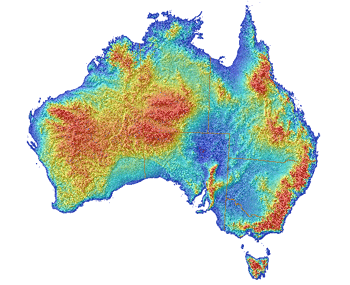
About ESIG
The Elevation Special Interest Group (ESIG) was formed in late 2007 to offer technical assistance in the development of a National Elevation Data Framework (NEDF) for Australia. The NEDF vision is to ensure that decision makers, investors and the community have access to the best available elevation data to address the needs of today and the decades ahead.
The primary role of the ESIG is to develop technical standards which improve the quality, utility and interoperability of elevation data to meet local, regional and national elevation data and information needs.
The ESIG involves experts from State/Territory and Federal mapping agencies, industry and academia. It now reports to the Permanent Committee for Topographic Information.
Terms of Reference
- Develop technical guidelines and standards for the acquisition, processing and quality assurance of elevation data
- Develop generic best practice ‘Statements of Work’ that may be used by agencies in developing project deliverables
- Liaise with ICSM committees and other appropriate bodies to optimise alignment of activities
- Facilitate national awareness of guidelines, best practice and standards.
Activities During 2010–2012
The ICSM LiDAR Specification and Tender Template were published in November 2010 for Australia and for New Zealand in September 2011. This has become a standard for government procurements of LiDAR with the continuous review of the specification and template to incorporate lessons learned over the period of use.
There is continued support for the objectives of the National Elevation Data Framework by contributing to the third National Elevation Data Audit published in November 2011.
Recently there has been coordination with the Bathymetry Working Group to align future activity in support of the ANZ Foundation Spatial Data Frameworks, Elevation and Depth theme.
Benefits Through Collaboration
LiDAR is now a mature aerial survey technology. Surveys are conducted in all jurisdictions and it will be important to maintain standards for processing, product development, and ground control surveys.
Through collaboration, we ensure that the community of practise is vibrant and effective in keeping specifications and guidelines relevant.
Future Activities and Challenges
- Continue to contribute subject matter expertise and domain knowledge to the establishment of the ANZ Foundation Spatial Data Framework
- Combine with the Bathymetry Working Group to ensure that elevation data, above or below the water is consistent, discoverable, accessible and usable across the littoral zone
- Undertake a user needs and cost benefit analysis of high resolution elevation data for Australia in alignment with the Bathymetry audit
- Develop a national investment strategy
- Establish an agreed national governance framework
- Continue to improve the ICSM Digital Elevation Data Guidelines and ICSM LiDAR Specification and Tender Template
- Develop a companion tool with the Cooperative Research Centre for Spatial Information (CRCSI) to assist in quality assurance of data acquired using the ICSM LiDAR Specification.
Imagery Special Interest Group (ISIG)

Chair, David Abernethy
Manager, Imagery and Elevation Programs
Land and Property Information Division, NSW Department of Finance and Services
Sponsor, Paul Harcombe
Chief Surveyor of NSW
Land and Property Information Division, NSW Department of Finance and Services
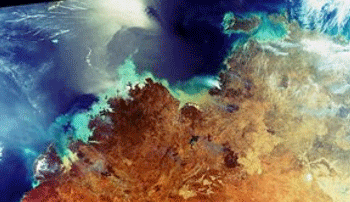
About ISIG
The ISIG is a working group reporting directly to the Permanent Committee on Topographic Information (PCTI). Formed in 2006 to monitor and report on emerging technical issues associated with remotely sensed, aerial data, especially digital photography.
Terms of Reference
- Develop and promote a national awareness of imagery and its uses
- Develop and promote a framework for national coordination and image data interchange
- Develop and promote a framework for the discovery and access to imagery holdings
- Develop a template/model for assessment to advise on emerging trends and technologies
- Explore and enhance the use and application of imagery
- Develop and promote a set of standards and formats for image capture and dissemination.
Activities During 2010–2012
The ISIG holds a face–to–face meeting on an annual basis, and teleconferences when needed.
The major achievement has been the publication of draft standard specifications for orthorectified aerial imagery.
More recently discussions have been around technically supporting the ANZLIC Foundation Spatial Data Framework (FSDF) as subject experts in defining the spatial foundation Imagery theme.
Benefits Through Collaboration
The group’s terms of reference have been the key driver of collaboration. ISIG over the last two years via teleconferences or face to face meetings have discussed topics covered in the TORs resulting in specific outcomes such as the orthorectified imagery specifications, technical updates and provision of awareness around related new technology, managing contracts and discussing issues concerning acquisitions.
Future Activities and Challenges
Due to the similarities to the Elevation and Bathymetry SIG’s the existing orthorectified specifications are currently been reviewed and aligned to the ICSM LiDAR specifications and Tender templates for consistency.
The rapid take up of 3D imagery and its applications are areas which need to be investigated.
The focus of the ISIG to date has been largely been on orthorectified imagery however the arrival of commercial UAV’s and multi lens oblique cameras is likely to lead a paradigm shift in imagery uses and applications.
Bathymetry Working Group (BWG)

Chair, Douglas White
Deputy Director, Data Management
Data Services Directorate, Australian Hydrographic Service – R.A.N.
Sponsor, Commodore Rod Nairn
Director General Navy, Hydrography and METOC
Hydrographer of Australia

About BWG
The Bathymetry Working Group was established in August 2011 with an acknowledgement that a greater amount of bathymetric data was being acquired by jurisdictions throughout Australia and that there was a requirement to catalogue this fundamental national dataset so that it was discoverable and accessible by a range of stakeholders. It is a sub–committee of the ICSM Permanent Committee on Topographic Information (PCTI)
Terms of Reference
- Identify, engage and liaise with stakeholder agencies, including peak government and industry groups responsible for the custodianship and use of bathymetric data
- Conduct a national audit of bathymetric data and recommend a federated custodianship model for storage, discovery and access to data that aims to reduce duplication and redundancy
- Develop and promote best practice standards for data registration, storage and exchange through the collection of metadata and the adoption of a common and open digital format.
Activities During 2010–2012
Since its inception, the BWG has initiated an engagement of all stakeholders with the aim of building a national registry of bathymetric data holdings. As the knowledge of this foundation spatial data increases through auditing the jurisdictional repositories, so too does the return on investment through an enhanced capability for discovery and access.
The BWG continues to support the CRC for Spatial Information through its work on establishing the user requirements for bathymetric data within Australia and the development of specifications and guidelines for the acquisition of LiDAR bathymetry.
The future activities of the group will focus on the combined use cases and requirements of the elevation and depth theme. This will be achieved through the establishment of a governance framework that will promote a national investment strategy for the all types of elevation data that in turn, is supported by specifications and further improvements in the way we discover, access and use bathymetry.
Benefits Through Collaboration
With the recognition that a great amount of bathymetric data was being acquired by jurisdictions, it was important to develop a working group to enable discussions around jurisdictional acquisitions and specifications with the goal of a firm understanding of what data is available, what is the specifications and what is missing. Capture specifications and techniques are also discussed, as membership of the WG contains subject matter experts.
To support the TORs and collaboration the BWG work plan identifies, engages and liaises with a range of stakeholder agencies, including peak government and industry groups responsible for the custodianship and use of bathymetric data.
Future Activities and Challenges
Recent discussions proposed a revised draft TOR and work programme for an Elevation and Depth Working Group that recognised the need for a national elevation investment strategy, a governance framework that aligned with the use cases to be developed as part of the ANZLIC FSDF and continued focus on specifications.
A national bathymetry audit remains the primary focus. However this will now be conducted as part of a new elevation audit in response to the possible amalgamation of the ESIG and BWG. The bathymetry audit will target jurisdictions and bathymetry data managers through the hydrographic community in conjunction with existing PCTI points of contact.
Work undertaken by the CRCSI in relation to specifications and quality assurance will continue to be supported.
Roads Working Group (RWG)

Chair, Simon Costello
Group Leader
National Geographic Information Group,
Geoscience Australia, Australian Capital Territory
Sponsor, Bill Hirst
Surveyor–General,
Planning and Land Authority, Australian Capital Territory
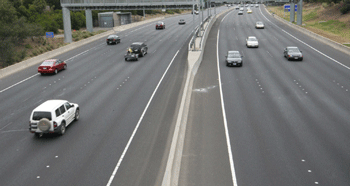
About RWG
The RWG is a working group reporting directly to the Permanent Committee on Topgraphic Information (PCTI). The RWG was established in May 2005 to improve consistency of capture and ease of dissemination of digital information about roads.
More recently ICSM has endorsed the broadening of the group’s terms of reference to consider other modes of transport and their interaction with the road network.
Terms of Reference
- Develop a transport data model with jurisdictions and PSMA in line with the ANZ Foundation Spatial Data Framework
- Review the implementation of the nationally consistent data model for road centrelines with jurisdictions and the PSMA. Learn from experiences to test relevance of the new model
- Continue to engage with other key government bodies and industry stakeholder groups, sharing expertise, and identifying areas and themes of national and regional priority for maintenance.
Activities During 2010–2012
The RWG holds a face–to–face meeting on an annual basis, and teleconferences when needed.
Work continues to refine the data dictionary and model developed for road centreline data. This model is now integrated into PSMA transportation data and has been adopted as an initial model for the Transportation Theme of the Foundation Spatial Data Framework.
The Group has also revised the terms of reference to incorporate other transport themes.
Benefits Through Collaboration
The nationally consistent data model for road centreline data provides a mechanism to harmonise data into a more comprehensive national product. Jurisdictions have confidence that, despite individual differences in data models, there is now consistency in how individual jurisdictions apply functionality to develop and maintain their own databases.
The success of the RWG has improved collaboration between mapping agencies, road traffic authorities, local government and other stakeholders for sourcing authoritative and comprehensive roads data classification systems.
Future Activities and Challenges
Investigations into how to incorporate other transport modes into the road network will be the focus of work for the group over the next few years. However work will also continue improving the current model and testing it within jurisdictions. The ACT, with assistance from Geoscience Australia, is currently incorporating the model within existing jurisdictional data.
Points of Interest Working Group (POIWG)

Chair, Marty Stamatis
Manager, Location Data Management
Landgate, Western Australia
Sponsor, Dr Lesley Arnold
Manager
Location Knowledge Services, Landgate, Western Australia

About POIWG
The POIWG was established in May 2011 and tasked to facilitate the development of a national ‘points of interest’ dataset to support; emergency services; decision making; and cross government and community needs. It is a sub-committee of the ICSM Permanent Committee on Topographic Information (PCTI).
Terms of Reference
The terms of reference are aligned to the ICSM charter which is to provide leadership, coordination and standards for surveying, mapping/charting and national datasets.
The POIWG group will drive a national collaborative framework to POI data capture, storage and maintenance, and support ANZLIC strategic objectives:
- establish common data standards, models, and metadata and technology protocols
- build a collaborative data management framework—operating at local, state and national levels; in order to pool resources and eliminate duplication of effort.
The terms of reference are:
- Provide a focus for discussion of POI related issues on behalf of the national spatial information government and business communities
- Engage with key government bodies and industry stakeholder groups to develop a collaborative framework to consistently collect and maintain POI data with a goal of establishing a ‘single point of truth’ dataset
- Coordinate the development of nationally consistent POI data model in conjunction with jurisdictions and PSMA; to ensure that the model maps jurisdictional schemas/models to a national model
- Develop a POI Data Dictionary — to be incorporated into the Harmonised Data Model.
Activities During 2010–2012
The POIWG has held one face–to–face meeting and teleconferences when needed. The group has had discussion around two terms 'Point of Interest' and ‘Feature of Interest’; it was agreed both were acceptable and referred to the same thing. In this context the word ‘point’ does not relate to the spatial geometry. An appropriate definition of the term is ‘A point of interest is the location of a feature, service or activity that people wish to visit or know about’.
Activities completed to date include:
- An audit of the current status of POI datasets in each jurisdiction.
- Collate and distribute the top level classification of POI feature types.
- Compare the feature categories provided by the various jurisdictions, include Ordnance Survey and ANZSIC codes.
Benefits Through Collaboration
The nationally consistent data model for points of interest will provide a mechanism to harmonise data into a more comprehensive national products. Despite differences in jurisdictional models the outcomes of the group will provide guidance on the scope and specifications relating to points of interest (i.e. how to develop and maintain their own databases).
Future Activities and Challenges
Future meetings will address a number of issues:
- POI scope
- relationship between POI and address
- the value of quality data in relation to POI.
The aim will be to develop:
- a nationally consistent POI data model in conjunction with jurisdictions and PSMA
- a POI Data Dictionary.
(Permanent) Committee for Geographical Names in Australasia (CGNA)

Chair, William Watt
Manager, Roads and Crown Support
Department of Planning, Transport and Infrastructure, South Australia
Sponsor, John E Tulloch
Surveyor–General of Victoria
Department of Sustainability & Environment, Victoria

The mission of CGNA is to:
‘As the national focus group, to coordinate and communicate the consistent use of geographic place names, to meet community requirements.’
Terms of Reference
Without limiting its scope CGNA is to:
- Promote a greater community awareness of geographical names
- Develop and promote national guidelines for geographical names
- Promote the use of correct names by map, chart and electronic application producers
- Support the maintenance and development of jurisdictional and national gazetteers; and SCAR, CGA & SCUFN*
- Support initiatives for the appropriate use and preservation of geographical names, and for the recognition of their heritage and cultural importance
- Support the United Nation Group of Experts on Geographical Names (UNGEGN) and its initiatives.
* SCAR: Scientific Committee on Antarctic Research
CGA: Composite Gazetteer of Antarctica
SCUFN: Sub-Committee on Undersea Feature Names
CGNA will:
- Develop and encourage the addition of, a national ASDI compliant Data Model for Geographic place names
- Utilise web sites as a prime mechanism for the (two way) sharing of information about geographic place names
- Develop and deliver an educational program to promote the significance of geographic place names in the community
- Develop and promote the adoption of National standards for the naming of geographic place names.
Activities During 2011–2012
CGNA continues to hold its annual face to face meeting and also a yearly teleconference. It has also held specific subject workshops prior to each meeting, with 2012 workshop focusing on the preparation of a strategic plan for the future activities.
CGNA has continued to review its terms of reference to ensure that it clearly defined outcomes and objectives ensure that these are relevant to today’s needs and establish a work program to meet these objectives.
CGNA also continues to monitor its key guidelines document Guidelines for the Consistent Use of Place Names, and update as required. These guidelines cover the choice, form and application of place names in Australasia and provide each naming authority with a basis for developing their own set of guidelines for naming places.
As part of continued strong engagement with the global geographic names fraternity, Bill Watt remained as the United Nations Group of Experts on Geographic Names (UNGEGN) rapporteur. In this two year reporting period Bill chaired a portion of the UNGEGN sessions, held in Vienna, Austria (2011) and New York, USA (2012) and also portions of the five yearly United Nations Conference on the Standardization of Geographical Names (2012).
CGNA members played a major part in the successful review of the Rural and Urban Street Addressing Standard (AS/NZS 4819:2011). This revised standard has now been released and copies provided to all local government authorities.
Benefits Through Collaboration
Standardised place names usage provides significant benefits to spatial and non-spatial activities alike. Place names have been identified by ANZLIC as one of the foundation spatial data themes.
CGNA’s involvement in establishing best practice for state and territory place naming jurisdictions within Australia and in New Zealand has provided a consistent approach to the practice of naming places.
One of the key data sets made available through CGNA is the National Gazetteer of Australia. This is a subset of the jurisdictional data including all states and territories, the Australian Antarctic Division and the Australian Hydrographic Service, Royal Australian Navy. This database is now available free of charge using Creative Commons licensing.
These activities have a flow-on effect into other activities of ICSM including topographic information and addressing standards.
CGNA has also collaborated with other agencies in both research aspects and data dissemination. The education package provided was readily accepted by many education agencies in Australia for use in upper primary and lower secondary year levels and continues to be used.
Future Activities and Challenges
The release of the Gazetteer of Australia as a free product has seen a significant increase in the access to this data. This is good news, but with the increase in the client base, there is an expectation of an increase in client requirements relating to data content and accuracy.
A number of other issues are under investigation and development relating to the gazetteers. Included in this is the interaction with the points and features of interest data sets being requested by PSMA, the use of volunteer geographic information (or crowd sourcing) within the gazetteer. The depiction and capture of the spatial extents for various features types within jurisdictional gazetteers and a corresponding link between them, is also a key consideration for a number of data users. Information relating to the derivation, history and meaning of names is another challenge, and methods of attracting input from communities are under consideration.
Permanent Committee for Tides & Mean Sea Level (PCTMSL)
About PCTMSL

Chair and Sponsor, Commodore Rod Nairn
Director General Navy, Hydrography and METOC
Hydrographer of Australia
The main role of the Permanent Committee for Tides and Mean Sea Level is to coordinate a national database of tidal records as well as develop national standards and best practice guidelines for tidal related matters. PCTSML also acts as a focal point for national inquiries relating to tides and mean sea level and identifies long-term tide and sea level management requirements for Australia and New Zealand.
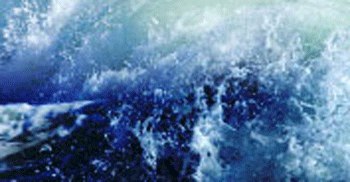
Terms of Reference
- Ensuring the applicability and adequacy of the current tide gauge network and identify future developments for scientific, economic and public interest applications
- Development and maintenance of national standards and best practice guidelines related to the data collection, processing, analysis and distribution of tidal and mean sea level information
- Development of appropriate material for the promotion of tidal and mean sea level issues within Australia and New Zealand and their areas of interest
- Represent ICSM, as required, on appropriate international associations.
Activities During 2010–2012
PCTMSL holds two face–to–face meetings each year, linked to the Ports Australia Surveyors Working Group meetings. In between the biannual meetings the PCTMSL Working Group holds teleconferences when needed.
The PCTMSL made significant progress in respect of one of its tasks which involves linking all tide gauges through their bench marks to the ellipsoid and also establishing the reference surfaces (Highest Astronomical Tide (HAT), Lowest Astronomical Tide (LAT), Chart Datum (CD), etc) in relation to each tide gauge. It has sought considerable information in respect of this from various State and federal organisations to date — achieved for 55% of the total stations (72 of 131 continuous monitoring tide gauges). The CRC for Spatial Information (CRC SI) UDEM Project 3 ‘Vertical Datum Transformations across the Littoral Zone› is analysing the provisional data collected to date with an aim to develop a demonstration tool for the mathematical interpolation of mean sea level between locations of the tide gauges.
The revision of the Australian Tides Manual (SP9) was completed in October 2011. Sections 2.1 and 2.2 of the document, relating to standard tide gauge installation and types of tide gauges, have been updated.
PCTMSL continues to work with the Bureau of Meteorology’s National Tidal Centre (NTC) and the Australian Hydrographic Service to hold annual tides workshops providing training for people involved in tidal data collection, analysis and prediction. The workshops are held at the NTC’s office in Adelaide. Topics covered include:
- tidal theory
- storm surges and extreme events
- instrumentation
- real-time systems with meteorological sensors
- benchmark levelling and datums
- data analysis and quality control
- archiving and quality assurance.
A draft UML of the Tidal Module within the Harmonised Data Model (HDM) is being developed and work is also being carried out in regard to applying definitions to each element of the draft model.
Benefits Through Collaboration
Through this Committee, knowledge and experiences are shared on new instrumentation and technologies. This reduces cost for all members through the reduction of testing, research and trial costs. Furthermore it improves data quality and consistency with collection and processing.
The annual Tides Workshop provides an opportunity for additional tidal training and is also recognised as a Continuous Professional Development event for SSSI members.
Collaboration between the PCTMSL and CRC SI in respect of work associated with ‘Link between Tidal Reference Levels and Australian Height Datum (AHD)’ will enhance the understanding of changes to the sea level and the accuracy and reliability of climate change modelling (tidal, storm surge, inundation etc). It is also providing a better understanding of the uncertainties associated with the tidal plane and AHD, more accurate modelling and improvements to projects such as the national DEM.
Future Activities and Challenges
These include:
- continuous updating of SP9 — the Australian Tides Manual
- identifying the outstanding work and cost estimate of accomplishing the task ‘Link between Tidal Reference Levels and Australian Height Datum (AHD)’
- identifying an expert analyst/modeller versed in the UML who can convert draft UML (developed by PCTMSL) to a totally workable UML, i.e. shaping it into a proper UML.
Data Framework Technical Sub-Committee (DFTSC)
About DFTSC
The Data Framework Technical Sub-Committee was established in November 2001 following the disbanding of the Harmonisation Working Group. Its role was to manage the maintenance, implementation and further development of the ICSM Harmonised Data Framework (HDF) which is essentially a jurisdictionally agreed high level representation of the structure of spatial data. This Framework consists of a series of data models (HDMs). It is fundamentally about supporting a range of activities from database design through to data delivery.
Activities in 2010–2012
The committee was disbanded in 2011 as part of ICSM’s review of the structure and role of its working groups. ICSM continues to draw on the expertise of the committee members, and should the need emerge for a committee with these skills to support ICSM activities, the committee would be re–established. For example, some work may be required to support ICSM's contribution to the ANZLIC Foundation Spatial Data Framework.
Financing Our Work
| 2012 | 2011 | |||
|---|---|---|---|---|
| Receipts | $ | $ | ||
| Subscriptions | 103 500 | 101 000 | ||
| Sales | 0 | 7 050 | ||
| Bank Interest | 14 111 | 12 601 | ||
| GST Received | 11 911 | 13 509 | ||
| Third Party Contributions | 381 | 1 891 | ||
| Total Receipts | $ 129 903 | $ 136 051 | ||
| Payments | ||||
| PC Addressing | 7 800 | 4 862 | ||
| PC Cadastre | 7 394 | 3 000 | ||
| ePlan | 1 340 | 1 127 | ||
| DFTSC | 0 | 169 | ||
| PC Geodesy | 4 457 | 15 380 | ||
| PC Geographic Names (CGNA) | 7 598 | 6 480 | ||
| PC Tides & Mean Sea Level | 90 | 1 386 | ||
| PC Topographic Information | 191 | 0 | ||
| Bathymetry Working Group | 176 | 0 | ||
| Elevation Special Interest Group | 488 | 484 | ||
| Imagery Special Interest Group | 395 | 731 | ||
| Points of Interest Working Group | 0 | 202 | ||
| Roads Working Group | 273 | 522 | ||
| Executive | 28 873 | 20 059 | ||
| Stationery and Publications | 0 | 7 806 | ||
| Auditor’s and bank charges | 1 451 | 1 060 | ||
| GST paid | 11 210 | 12 048 | ||
| Total Payments | $ 71 736 | $ 75 316 |
The operating surplus from this period is being held in reserve to engage external expertise to assist ICSM projects where it is considered necessary.
Activities and Events
As part of our policy of engaging with spatial professionals; over the two years covered by this report, ICSM has had a significant presence at the following events:
- Spatial@gov Conferences — Canberra, October 2010 and November 2011
- United Nations Group of Experts on Geographic Names (UNGEGN) 26th Congress, Vienna, 2011 and 27th Congress, New York 2012.
- Surveying and Spatial Sciences Institute (SSSI) Conference — Wellington, NZ November 2011
- United Nations Committee of Experts on Global Geographic Information Management (UNGGIM), New York, 2012
- United Nations Permanent Committee on GIS Infrastructure for Asia and the Pacific(PCGIAP)
As part of our strategy of informing about our activities; we:
- release the Minutes of ICSM Meeting every 6 months
- publish our Biennial Report every 2 years
- publish the ICSM Newsletter every 6 months
- routinely publish general information material.
ICSM Members
AUSTRALIA — Civilian
Simon Costello
Group Leader, National Geographic Information Group
Geoscience Australia
Gary Johnston
Group Leader, Earth Monitoring and
Hazards Group
Geoscience Australia
AUSTRALIA — Defence (Navy)
Commodore Rod Nairn, RAN
Hydrographer of Australia
Australian Hydrographic Service
AUSTRALIA — Defence (AGO)
Graham Johnston
Assistant Director,
Geospatial Analysis Centre
Australian Geospatial–Intelligence Organisation (AGO)
NEW ZEALAND
Dr Don Grant
Surveyor–General
Land Information New Zealand
AUSTRALIAN CAPITAL TERRITORY
Bill Hirst
Surveyor–General
ACT Planning and Land Authority
NEW SOUTH WALES
Paul Harcombe
Chief Surveyor of NSW
Land and Property Information
NORTHERN TERRITORY
Garry West
Surveyor–General
Department of Lands and Planning
QUEENSLAND
Dr Russell Priebbenow
Director of Surveys
Spatial Information Group
Department of Environment and
Resource Management
SOUTH AUSTRALIA
Peter Kentish
Surveyor–General, Manager
Land Boundaries Branch
Department of Transport,
Energy and Infrastructure
TASMANIA
Peter Murphy
Surveyor–General
Information and Land Services
Department of Primary Industries,
Parks, Water & Environment
VICTORIA
John E Tulloch
Surveyor–General of Victoria
Department of Sustainability and Environment
John Gallagher
Manager
Spatial Information Infrastructure
Department of Sustainability and Environment
WESTERN AUSTRALIA
Dr Lesley Arnold
Manager
Location Products and Services
Landgate
ICSM SECRETARIAT
Susie Salisbury (until December 2010)
Lesley Waterhouse
ICSM Executive Officer
Geoscience Australia
Email: icsm@ga.gov.au
Phone: (02) 6249 9677
Mobile: 0419 694 669
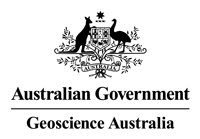
Australia–Civilian
Geoscience Australia
GPO Box 378
CANBERRA ACT 2601
Within the Commonwealth portfolio Resources, Energy and Tourism, Geoscience Australia takes a lead role in producing national geoscientific information and knowledge. Key areas of activity include data acquisition, analysis and dissemination, research and advice associated with:
- topographic mapping and data
- pre-competitive petroleum exploration
- pre-competitive onshore mineral exploration
- coastal zone and sea-bed mapping, including Australian Marine Spatial Information System (AMSIS)
- risk analysis and modelling to support national initiatives for Disaster Mitigation Australia, counter terrorism and critical infrastructure protection
- seismic and geodetic monitoring
- Australian National Tsunami Warning System (ATWS)
ICSM Executive Officer
Tel: +61 2 6249 9677
or (02) 6249 9677
Email: icsm@ga.gov.au
The Executive Officer of ICSM:
- provides Secretariat support to the Committee
- provides project support to ICSM and ICSM working groups
- maintains the ICSM website.
The Secretariat was provided by Geoscience Australia during this reporting period.
Australia — Defence
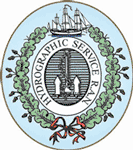
Australian Hydrographic Service
Locked Bag 8801
WOLLONGONG NSW 2500
The Australian Hydrographic Service (AHS), a part of the Royal Australian Navy, is the organisation responsible for hydrographic surveying, national charting and the provision of hydrographic services that meet Australia’s national obligations as a signatory to the United Nations Convention on Safety of Life at Sea (SOLAS). This role requires the coordination and determination of policy and standards for hydrographic surveying and charting, as well as contributing to the national collection, coordination, exchange and metadata standards for maritime geospatial data.
The AHS is also responsible for providing maritime military geospatial information in direct support of the Australian Defence Force mission.
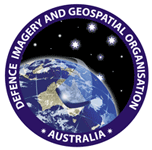
Australian Geospatial-Intelligence Organisation (AGO)
PO Box 2793
BENDIGO VIC 3551
The Australian Geospatial–Intelligence Organisation (AGO) — formerly Defence Imagery and Geospatial Organisation (DIGO) is the lead geospatial and imagery intelligence organisation in the Department of Defence. Its functions, as described in the Intelligence Services Act 2001, include meeting the operational, targeting, training and exercise requirements of the Australian Defence Force; supporting Commonwealth and State authorities in carrying out national security functions and to provide Commonwealth and State authorities and bodies imagery and other geospatial products in support for carrying out their emergency response functions.
AGO continues to produce mapping over many training areas in Australia and its production program also includes assisting its neighbouring SE Asian nations with their mapping programs. This currently sees AGO mapping PNG and its Island Groups to the North. Vanuatu, Solomon Islands have now been completed and delivered. The programs provide these countries with up to date mapping coverage in both hardcopy and digital format, included with this is the delivery of systems and training to ensure each nation has its own indigenous capability.
New Zealand

Land Information New Zealand
PO Box 5501
WELLINGTON NEW ZEALAND
Land Information New Zealand (LINZ) is responsible for providing New Zealand’s authoritative land and seabed information. This covers responsibility for the geodetic reference system, the cadastral survey system, topographic mapping, hydrographic charting, geographic names, the land title system, Crown property, the valuation rating system, electoral boundaries and continental shelf boundaries.
Australian Capital Territory
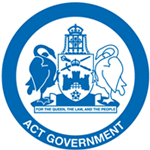
ACT Environment and Sustainable Development Directorate
GPO Box 1908
CANBERRA ACT 2601
The Surveyor–General for the ACT is a statutory appointment under the Surveyors Act (2007). The Surveyor–General maintains the ACT’s secure system of land ownership and tenure by ensuring that land boundaries are unambiguously defined and accurately recorded. The Surveyor–General’s responsibilities include standards for surveying and the regulation and licensing of surveyors in the Territory. The Surveyor–General manages the Office of the Surveyor-General within the ACT Environment and Sustainable Development Directorate. Through this office the Directorate produces, updates and maintains and distributes a range of land information including a most comprehensive and accurate cadastral database. It also checks survey plans, opens and closes roads, provides and maintains an extensive survey control network and manages a unique place and road naming infrastructure.
New South Wales

Land and Property Information
PO Box 15
SYDNEY NSW 2001
Land and Property Information provides a variety of land administration and land management products and services. These include land ownership information, surveying and mapping, land valuation services, stewardship and development of Crown lands and soil, water and environment conservation works and consultancy services.
Our products and services underpin the economic well being of the State of New South Wales by providing sound, accurate land information, which assists in generating economic growth and investment in New South Wales, and informing planning, policy development and decision making across the public sector.
Northern Territory

Department of Lands and Planning
GPO Box 1680
DARWIN NT 0801
The Department of Lands and Planning is the lead agency for land administration and spatial information in the Northern Territory Government. Spatial information is largely delivered through the business units of the Land Information Division as follows:
- Survey — provides the statutory functions of the Surveyor–General, geodetic and cadastral (or land boundaries) infrastructure and supports the Place Names Committee and Surveyors Board for the Northern Territory
- Land Information — provides whole of government aerial photography, satellite imagery and topographic information programs, generates products and services from integrating spatial data and delivers services through Land Information Centres
- Valuation — provides the statutory functions of the Valuer-General for both commercial land and property valuations for the Northern Territory and local governments
- Land Information Systems — provides integrated spatial information systems and services to the department and other government agencies and coordinates land information initiatives across Northern Territory, local and Australian governments.
Queensland

Department of Natural Resources
and Mines
GPO Box 2454
BRISBANE QLD 4001
The Department of Natural Resources and Mines (DNRM) is committed to the sustainable use of Queensland's natural resources: our land, water and minerals. The management of the state's natural resources is central to delivering economic, environmental and social benefits to all Queenslanders. The department also provides support for the safety and health of all Queensland miners and people working in allied industries.
DNRM has five main areas of service delivery:
- mining and petroleum
- natural resources operations
- land and indigenous services
- water and catchments
- mine safety and health.
South Australia

Department for Transport, Energy
and Infrastructure
GPO Box 1354
ADELAIDE SA 5001
Land Services Division is a business unit within the Department for Transport, Energy and Infrastructure and has a lead role for land administration within South Australia through the provision of:
- a survey infrastructure
- a guaranteed system of land titling
- an impartial property valuation service
- land and property information.
The Group includes the statutory offices of the Registrar–General, Surveyor–General, and Valuer–General and provides a range of land administration products and services to government and the community.
Tasmania

Department of Primary Industries, Parks, Water and Environment
GPO Box 44
HOBART TAS 7001
The Department of Primary Industries, Parks, Water and Environment (DPIPWE) drives sustainable development of Tasmania’s natural resources by playing a central role in industry development, natural resource management, land information services and the conservation of our natural environment.
Our broad range of services include: agriculture; fisheries and aquaculture; land and water resource management; nature conservation; Crown land management; quarantine; Service Tasmania shop management; and land title, valuation and mapping services.
The Information and Land Services Division provides services that maintain the security of land tenure, including the collection and maintenance of core land datasets and the State's cadastral mapping system. The Division also provides access to land-related information through the Land Information System Tasmania (LIST) web interface.
Victoria
Department of Environment, Land, Water & Planning
PO Box 500
EAST MELBOURNE VIC 3002
The Department of Environment, Land, Water and Planning creates liveable, inclusive and sustainable communities that support jobs and growth in Victoria. We recognise the link between the built and natural environment in the quality of our lives, and work to accommodate population growth while maintaining world class liveability and protecting our heritage for future generations.
Western Australia
Landgate
PO Box 2222
MIDLAND WA 6936
Landgate is the statutory authority responsible for Western Australia’s land and property information.
Landgate maintains Western Australia’s official register of land ownership and survey information. It plays a key role in providing quality data, secure information systems and valued services vital to the efficient functioning of the land and property market, and the State’s rating and taxing base.
Between 40 and 50 per cent of State and local government revenues rely upon Landgate data, which demonstrates how the authority’s functions underpin the operations of government, industry and the economy.
Landgate has a leadership role in bringing industry and government stakeholders together as part of an integrated spatial information industry in the State. By opening up access to government data and increasing its use, Landgate delivers economic, environmental and social benefits to Western Australia.
Landgate also continues to provide a wide range of reliable land, property and spatial information products and services that meet customer needs.
Acknowledgements
Graphic Design with thanks to Geoscience Australia

